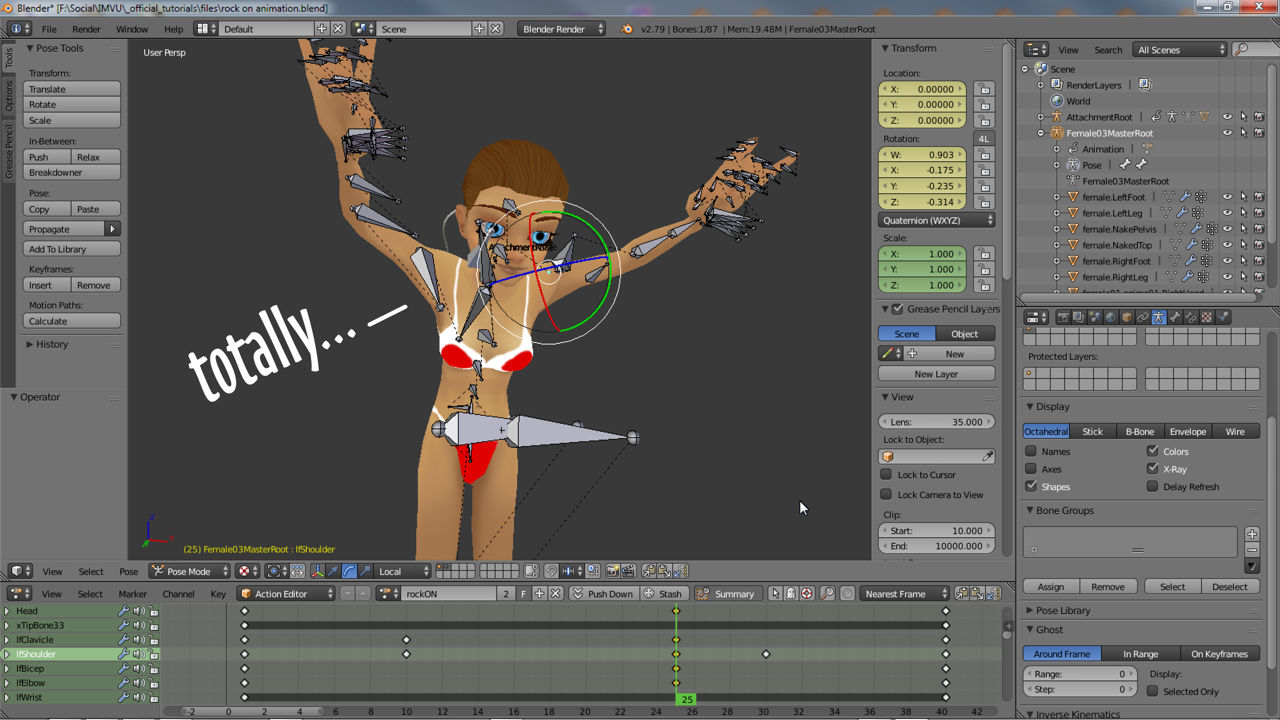Animation & Avatar Actions
All products that animate need and Action, avatars are no different. Avatar Actions then are where the various static and animated poses that avatars use are set-up and controlled. Here the avatar can be made to do something either on its own or with a parnter in an interactive couples pose.
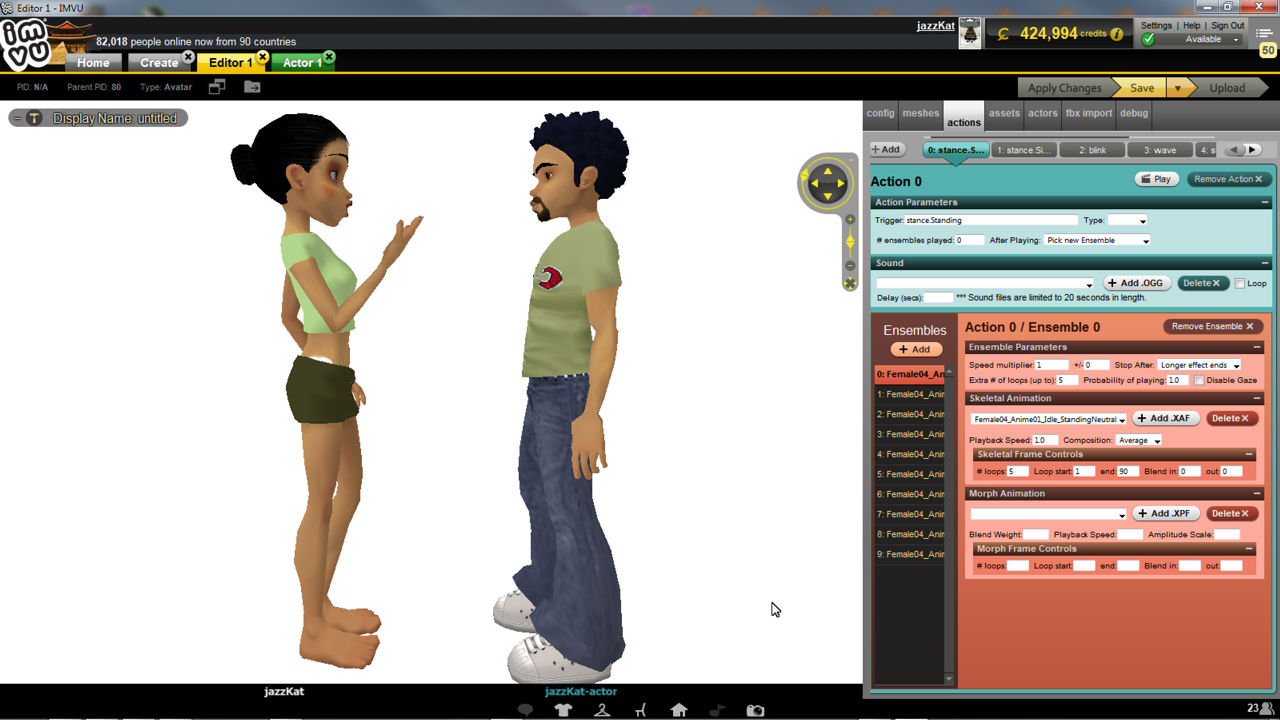
What is an Action
Actions are essentially optional animation and audio assets brought into a project to affect its behaviour or appearance, a couples pose for example, or a spinning top, would do little without a pose or animated sequence assigned to appropriate elements of each item. In other words, they add the visual aspect of IMVU’s interactive elements; when a seat or avatar spot is click something happens.
IMVU’s Action system
Given the flexibility of the Actions system, products can have simple action the perhaps triggers a single animation, something spinning infinitely, or more complex sequences, an object performing different movements based on scrolling through an animation collection or ‘ensemble’ as they are called. Either way all Actions are governed by the same basic conditions, that;
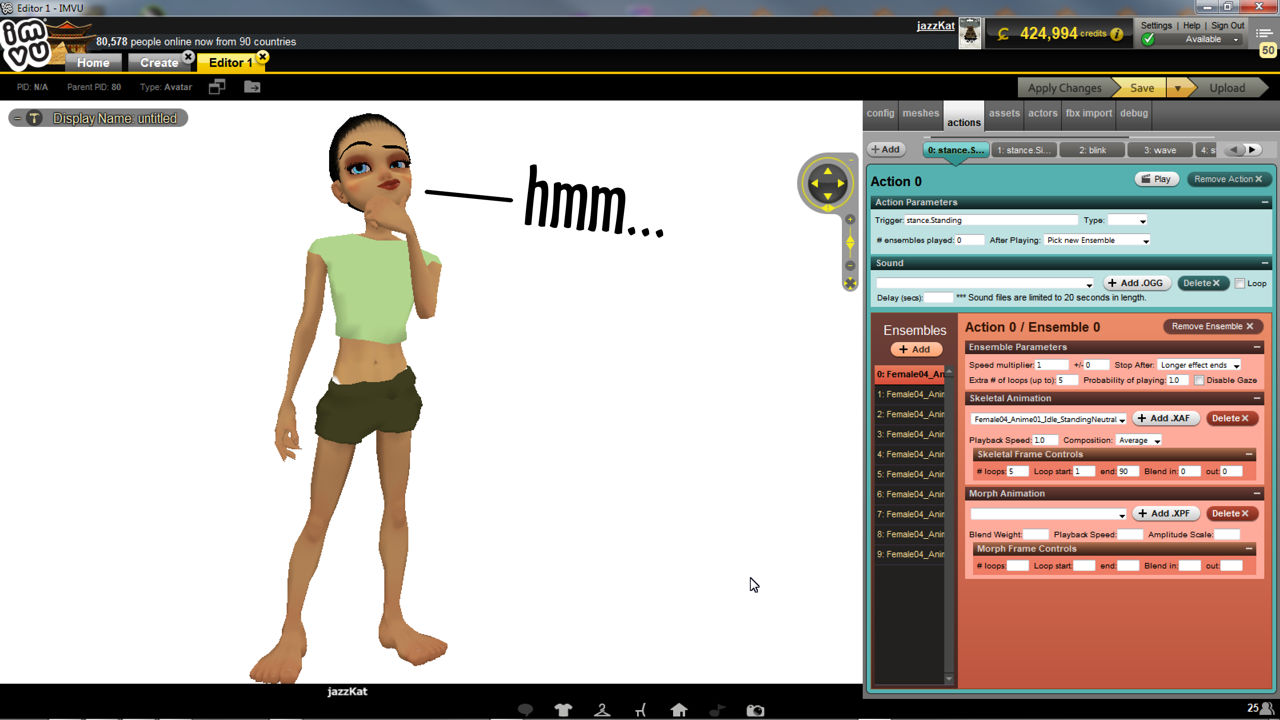
Types of Action
There are two types of Action; automatically triggered Actions and manually triggered Actions. In practice this means avatars can perform actions based on whether they are triggered using the ‘stance’ triggers (automatic), stance.Sitting and stance.Standing, or words and phrases typed into chat (manual), e.g. “lol“, “burp” and so on.
For example, if the avatar were to perform a cartwheel the trigger property in the editor would be set to “cartwheel” or similar, causing the avatar to animate and perform a cartwheel when typed in chat. For the animation to play when the avatar sits or stands the trigger is set to ‘stance.Sitting‘, ‘stance.Standing‘ or both depending on when the Action plays out.
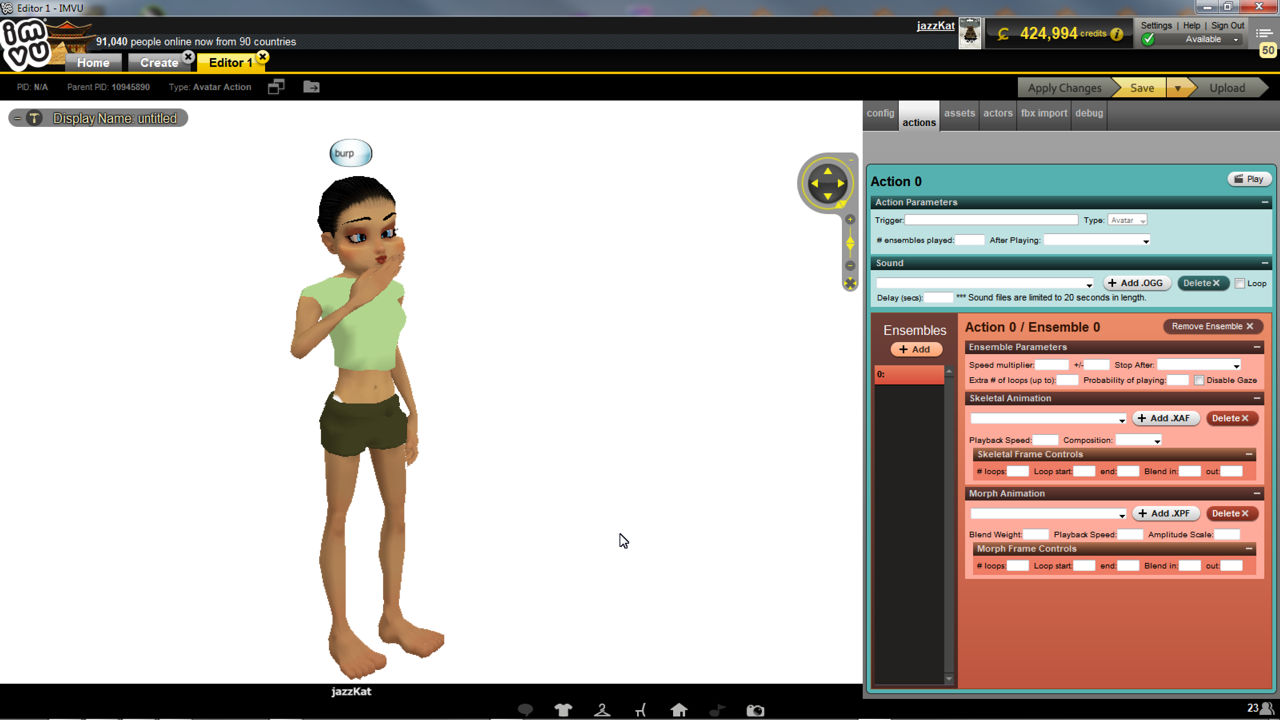
The IMVU Action Editor
Actions are assembled in the actions tab of a Create mode Editor. Here the basic properties controlling the overall Action, what triggers it etc., are established and the animation assets loaded. Adding a custom pose for example would mean stance.* set as the trigger, which activates a corresponding pose animation selected as the Skeletal Animation *.xaf, typically brought in during FBX import. More complex actions can be created utilising the additional settings and adding multiple animations to individual ensembles, the collection then controlled by the Actions overall properties.
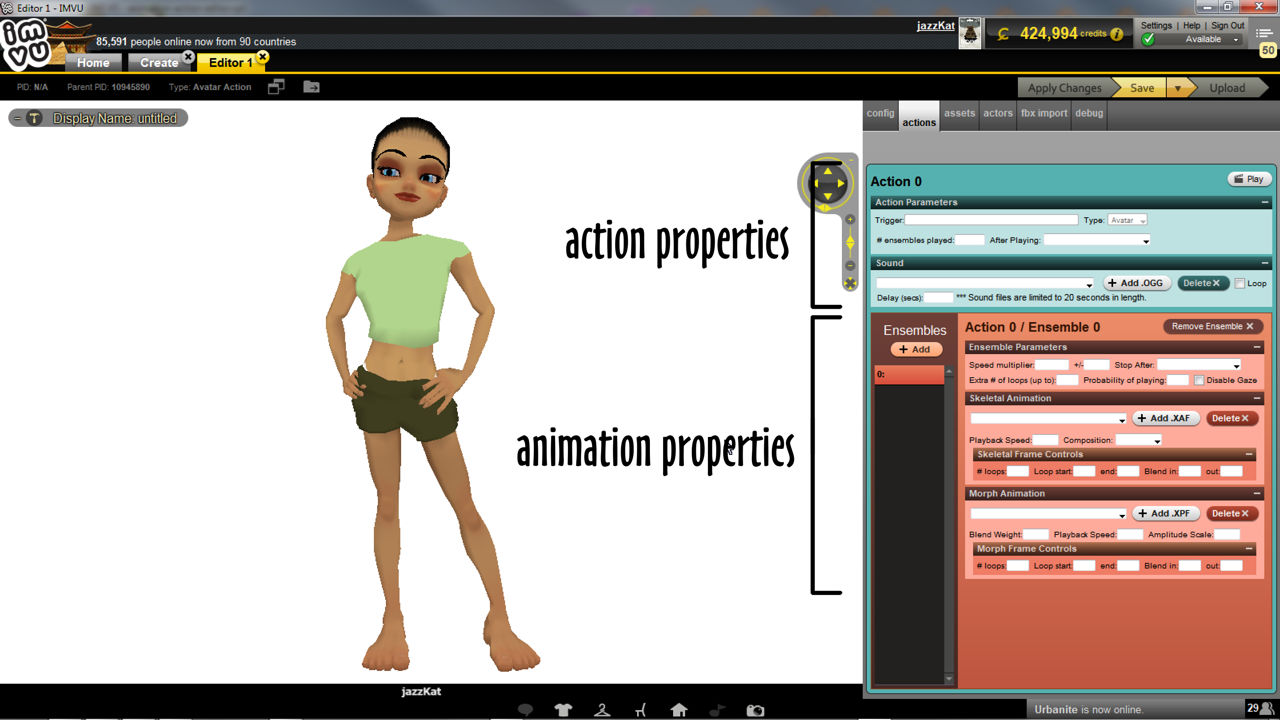
Avatar Actions and Blender
Avatar Actions generally have little to do with Blender other than using XAF skeletal and/or XPF shape key (morph) animations exported from Blender to FBX. So long as each type of animation has an Action in Blender, and the correct options are set on export, IMVU will import and use the tracks (sequences) it finds.
